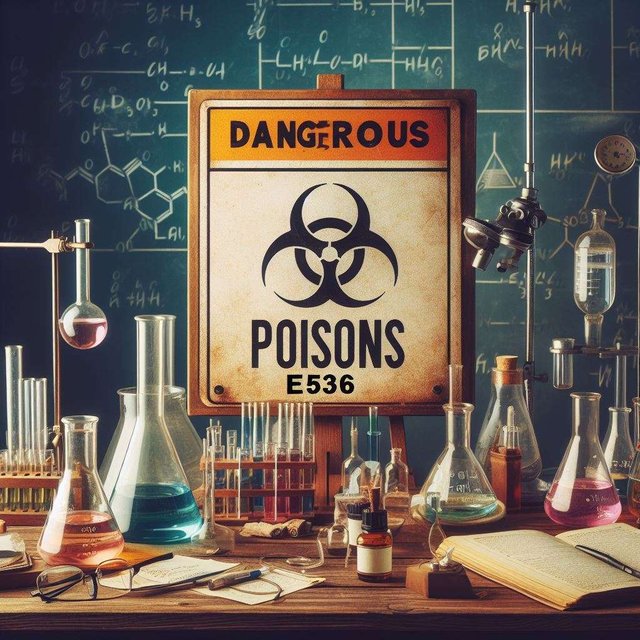E536: Is It Safe? Understanding the Risks of This Common Anti-Caking Agent

E536, also known as potassium ferrocyanide, is a common anti-caking agent in food production, mainly used in table salt to prevent clumping. Although it is regulated and approved for food use, some health concerns persist regarding its potential effects in the human body, particularly due to its cyanide component.
What is E536 and Why is It Used?
E536 helps keep salt and other powdered foods from clumping in humid conditions. While its crystalline yellow compound contains cyanide, it’s generally used in very small amounts. Nonetheless, health-conscious consumers are concerned about its impact when used consistently over time, prompting questions about its safety in everyday food products.
How Does E536 React in the Stomach?
When ingested, potassium ferrocyanide can react with hydrochloric acid in the stomach, potentially forming iron chloride and hydrogen cyanide (HCN). HCN is toxic, as cyanide ions inhibit oxygen utilization at the cellular level. By blocking cytochrome c oxidase—an enzyme essential for cellular oxygen uptake—cyanide exposure can quickly lead to oxygen deprivation in tissues, a condition known as hypoxia.
Cyanide Toxicity and Its Effects
Hydrogen cyanide is among the most potent poisons. In acute cases, symptoms of cyanide poisoning include respiratory distress, dizziness, headaches, and digestive issues. Severe poisoning can result in seizures, unconsciousness, coma, or even death. Prolonged exposure to cyanide, even in small amounts, may harm the nervous system, creating lasting health effects.
Does Hydrogen Cyanide Accumulate in the Body?
While small amounts of cyanide can be processed by the body, repeated exposure allows it to accumulate in tissues, especially the brain. Although E536 is used sparingly in foods, chronic, long-term intake could present potential health risks.
The Use of E536 in Foods
Table salt naturally absorbs moisture, and anti-caking agents like E536 prevent it from clumping. Food manufacturers claim that E536 is used at very low levels, but concerns remain about the necessity of this additive in frequently consumed items.
Cyanide Poisoning Treatment
Immediate medical attention is required for cyanide poisoning. Treatment options include:
- Cyanide Antidotes: Sodium nitrite and sodium thiosulfate are known antidotes that neutralize cyanide ions.
- Oxygen Therapy: Oxygen aids cellular function when cyanide hinders oxygen absorption.
- Intravenous Alkaline Therapy: Bicarbonate injections help detoxify the body by neutralizing cyanide.
- Supportive Care: Stabilizing heart rate, blood pressure, and breathing are crucial during treatment.
How to Minimize Exposure
To reduce potential risks, consider foods without anti-caking agents and check labels carefully. Avoiding E536 in your diet may help limit cyanide exposure, while those working with cyanide compounds should practice industrial safety measures, including ventilation and protective equipment.
Conclusion
Though E536 is used in minimal amounts, its potential for cyanide release makes it a controversial additive. While approved in food manufacturing, consumers concerned about long-term health effects may prefer to avoid foods containing E536, choosing anti-caking-free products and reading labels carefully.